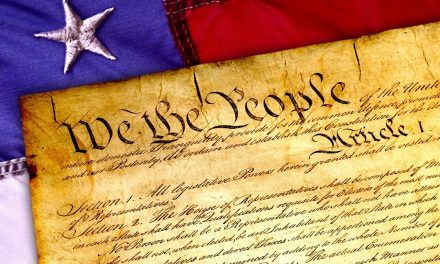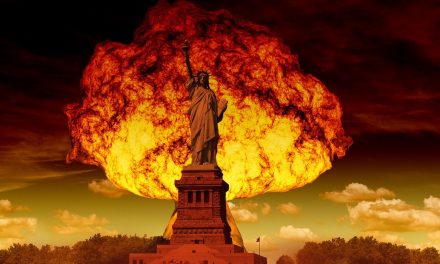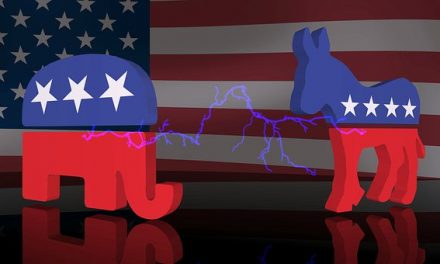April 18, 2025-
President Trump says Federal Reserve Chair Jerome Powell should resign because he refuses to reduce interest rates. It’s been a long-running irritation for small businesses.
Small business is really the straw that stirs the drink in the nation’s ability to increase the number of jobs in this country.
SBA data
According to Small Business Administration (SBA) figures, small businesses make up more than 99 percent of all employers and employ more than half of all workers. Another SBA stat stands out: Small businesses have created 64 percent of all jobs in the last couple of decades.
But small businesses really suffered during and a long time after the Great Recession — until after Donald Trump was elected President. That’s when small business confidence began to soar.
Some with the Federal Reserve simply didn’t understand why its policies left small businesspeople feeling as though they’re restrained in chains.
So why is it that a 2011 study by the Federal Reserve Bank of New York drew the wrong conclusions as to why small business employee rolls dropped a lot more than big-business employment in the recent recession?
The Fed’s study concluded that a drop in consumer demand triggered the cutbacks. Huh?
Correct conclusion
Fortunately, Dr. Scott Shane nailed the reason.
“I think two factors – reduced access to credit and the concentration of small businesses in the worst hit sectors of the economy – play a bigger role than the Fed researchers acknowledge,” he wrote.
Dr. Shane is an entrepreneurial scholar – the A. Malachi Mixon III Professor of Entrepreneurial Studies at Case Western Reserve University.
The Fed was right about the loss of small-business employment rolls — 10.4 percent among companies with fewer than 50 employees. And Dr. Shane agreed. As Biz Coach, a business-performance consultant, I saw it every day. Small businesses lost more jobs than their bigger counterparts during the Great Recession. So, we’re in agreement on the job losses.
“Businesses with fewer than 50 employees accounted for 28 percent of the 121 million Americans employed in the private sector in 2008, the latest Small Business Administration figures show,” wrote Dr. Shane. “That’s too much employment in small businesses for policymakers to find a way to fix the job problem without getting the smallest companies to boost hiring.”
Right again
He’s right again.
“Small businesses are underrepresented in two sectors that have weathered the downturn relatively well: exporters and those in research-and-development-intensive industries,” he wrote. “And small businesses account for much more of the employment in the sectors hardest hit by the downturn.”
As an example, he cites construction.
“While total employment fell only 4.4 percent from 2007 to 2009, employment in construction dropped a 19.4 percent. With so many small businesses in construction, this has meant heavy job loss,” he explained.
“The Fed researchers also play down the importance of tightened credit markets in accounting for the losses, arguing that most of the decline in borrowing by small businesses during the recession came from a decrease in demand for loans – not a reduction in supply,” he asserted.
Small business data
He cited figures from the National Federation of Independent Business: “In March 2009, at the depth of the recession, only 29 percent of small business owners reported that their borrowing needs were being met, down from 40 percent back in February 2007.”
Dr. Shane pointed out home-price declines adversely impacted small business credit.
“A 2007 survey by Barlow Research Associates shows that one-quarter of small business owners use the equity in their homes to fund their businesses,” he wrote. “And research by Kean University professor Samuel Bornstein shows that many of the loans used to tap that equity were the Alt-A, adjustable-rate and interest-only mortgages at the toxic heart of the crisis…”The decline in housing prices sucked a large amount of small business credit out of the system.”
Dr. Shane indicated home equity loans for small businesses decreased $25 billion.
“If policymakers want to counteract the job losses in small business, they need to do more than say that the cause is decreased demand,” he concluded. “Rather, they need to stimulate the small business heavy industries that were badly damaged by the recession and keep credit flowing.”
Amen. Naturally, it follows that new strategies for small business credit were warranted and a major reason why Mr. Trump was elected again.
From the Coach’s Corner, here’s a resource link:
11 Tips to Win Your Entrepreneurial (Marathon) Race — If you fear losing your entrepreneurial race, there are right steps to take and there are wrong. The good news is not all small businesspeople have cash flow issues. They’ve run the race and survived the marathon.
“Dreams come true if you survive the hard times!”
-George William Curtis
__________






